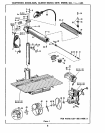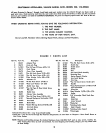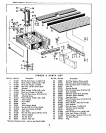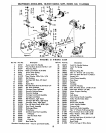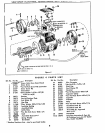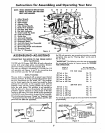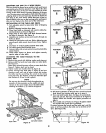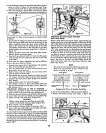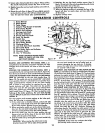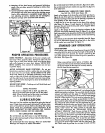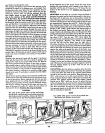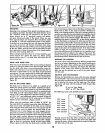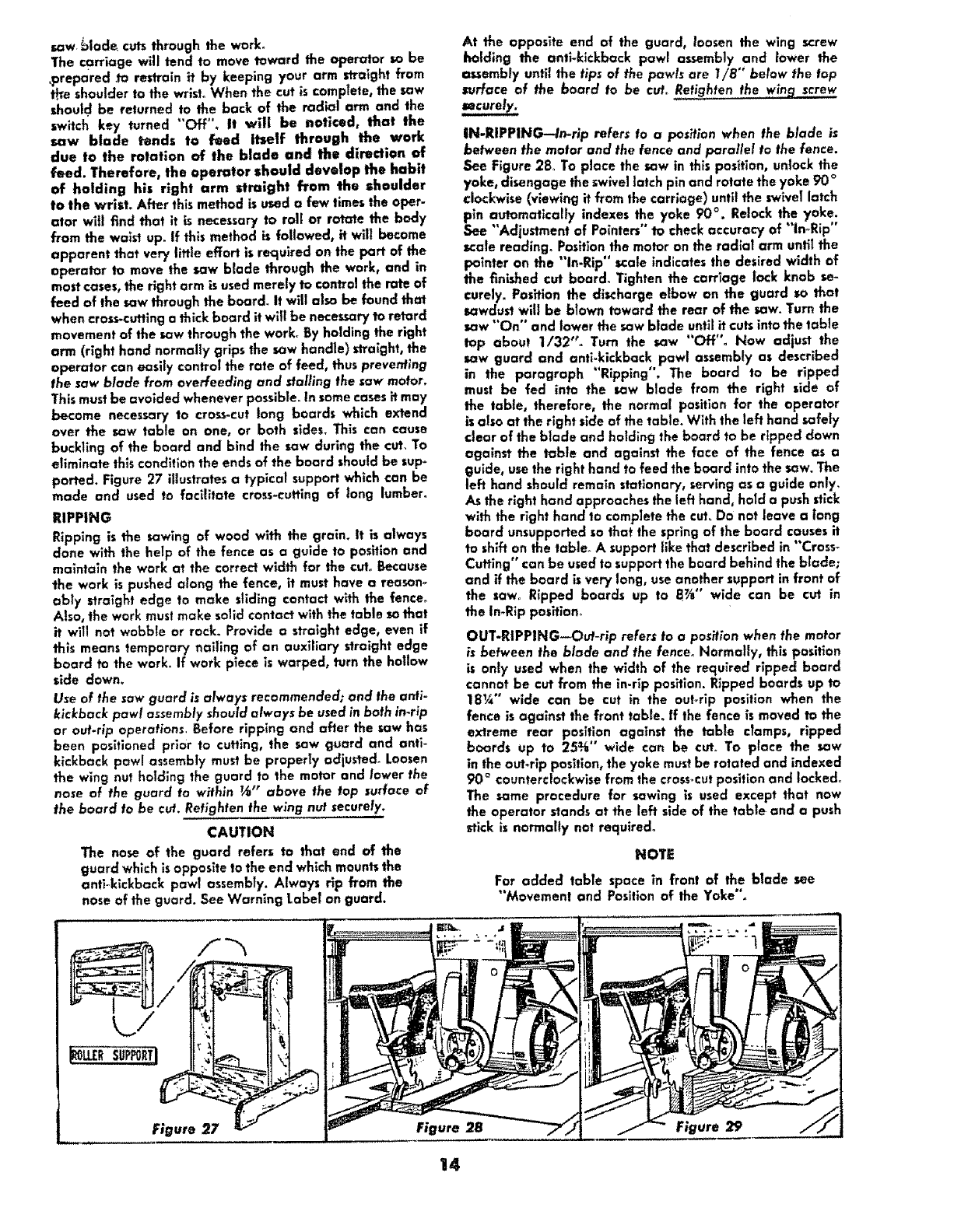
saw _lode cuts through the work_
The carriage will tend to move toward the operator so be
,prepared to restrain it by keeping your arm straight from
fife shoulder to the wrist, When the cut is complete, the saw
should be returned to the back of the radial arm and the
swltch key turned "Off". it will be noticed, that the
saw blade tends to feed itself through the work
due to the rotation of the blade and the direction of
feed. Therefore, the operator should develop the habit
of holding his right arm straight from the shoulder
to the wrlst_ After this method isused a few times the oper-
ator will find that it is necessary to roll or rotate the body
from the waist up. If this method is followed, it will become
apparent that very little effort is required on the pert of the
operator to move the saw blade through the work, and in
mostcases, the right arm isused merely to control the rate of
feed of the saw through the board_ It will also be found that
when cross-cuttlng a thick board itwilt be necessary to retard
movement of the saw through the work. By holding the right
arm (right hand normally grips the saw handle) _alght, the
operator can easily control the rate of feed, thusprever_ing
the saw blade from overfeeding and stalling the saw motor.
Thismustbe avoided whenever possible. In some casesit may
become necessary to cross-cut tong boards which extend
over the saw table on one, or both sides. This can cause
buckling of the board and bind the sow during the cut, To
eliminate th;s condition the ends of the board should be sup-
ported. Figure 27 illustrates a typical support which can be
made and used to facilitate cross<utting of long lumber°
RIPPING
Ripping is the sawing of wood with the grain. It is always
done with the help of the fence as a guide to position and
maintain the work at the correct width for the cut_Because
the work is pushed along the fence, it must have a reason..
ably straight edge to make sliding contact with the fence°
Also, the work must make solid contact wlth the table sa that
it will not wobble or rock. Provide a straight edge, even if
this means temporary nailing of an auxiliary straight edge
board to the work_ If work piece is warped, torn the hollow
side down.
Use of the sow guard isalways recommended; and the arrti-
kicEback paw! assemblyshou|d always be used in both in-rip
or our-rip operations, Before ripping and after the saw has
been positioned prior to cutting, the saw guard and anti-
kickback pawl assembly must be properly adjusted_Loosen
the wing nut holding the guard to the motor and lower the
nose of the guard to within _" above the top surface of
the board to be cu_. Refighten the wing n_ securely.
CAUTION
The nose of the guard refers to that end of the
guard which is opposite to the end which mountsthe
anti-kickback pawl assembly. Always rlp from the
nose of the guard. See Warning [.abel on guard.
At the opposite end of the guard, loosen the wing screw
holding the anti-kickback pawl assembty and lower the
assembly until the tips of the pawls are 7/8" below the top
_Jrface of the board to be cu/_ Retighten the wing screw
IN-RIPPING--In-rip refers to a posltion when the blade is
between the motor and the fence and parallel to the fence.
See Figure 28. To place the sow in this position, unlock the
yoke, disengage the swivel latch pin and rotate the yoke 90 °
clockwise (viewing it from the carriage) until the swivel latch
pin automatically indexes the yoke 90% Relock the yoke.
See "'Adjustment of Pointers" to check accuracy of "lnoRip"
scale reading. Positionthe motor on the radial arm until the
pointer on the "In-Rip" scale indicates the desired width of
the finished cut board_ Tighten the carriage lock knob se-
curely. Position the discharge elbow on the guard _o that
sawdust will be blown toward the rear of the saw. Turn the
saw "'On" end lower the saw blade until it cutsintothe table
top about 1/32",, Turn the saw "Off"° Haw adjust the
saw guard and anti.kickback pawl assembly as described
in the paragraph "Ripping". The board to be ripped
must be fed into the saw blade from the right side of
the table, therefore, the normal position for the operator
is also at the right side of the table. With the left hand safely
clear of the blade and holding the board to be ripped down
against the table and against the face of the fence as a
guide, usethe right hand to feed the board into the saw. The
left hand should remain stationary, serving as a guide only.
As the right hand approaches the left hand, hold a push stick
with the right hand to complete the cut°Do not leave a long
board unsupported so that the spring of the board causes it
to shift on the table_ A support like that described in "Cross_
Cutting" can be used to support the board behind the blade;
and if the board isvery long, useanother support in front of
the saw° R_pped boards up to 8_" wide can be cut in
the In-Rip posltiom
OUT-RIPPING-_Ouf_rip refers to a position when the motor
is between the blade and the fence° Normally, this position
is only used when the width of the required ripped board
cannot be cut from the in-rip position. Ripped boards up to
181,_°' wide can be cut in the out_rlp position when the
fence is against the front table. If the fence is moved to the
extreme rear position against the table clamps, ripped
boards up to 25,%" wide can be cut_ To place the saw
in the out.rip position, the yoke mustbe rotated and indexed
90 ° counterclockwise from the crossocutposition and locked..
The same procedure far sawing is used except that now
the operator stands at the left side of the table and a push
stick is normally nat required°
NOTE
For added table space in front of the blade see
"Movement and Position of the Yoke".
F;gure 27
Figure 2B
Figure 29
14




